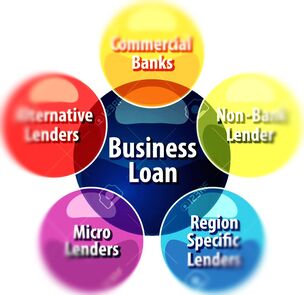|
Unlike any traditional banking, conventional lending or venture capital programs you've seen; this is a privately owned and operated wealth lending platform. Our lending group does NOT pool capital from a stable of investors like most, they lend their own capital.
|
|
The capabilities shown here are unique, and this group should be viewed as Financial Engineers rather than ordinary private lenders.
The way they do things can seem complicated for those who are used to conventional procedures. But the solutions they offer and the opportunities they can customize provide clients with significant advantages - extremely low interest rates in our matching and multiple based loans, fully mitigated risk in our Mortgage Loan Program and unusually high guaranteed returns with our Sponsorship Program. |
An Introduction to What is Possible But Not Very Well Known.
For almost 20 years this multiples based lending program (4X Loan) has been the capital source for select retail lenders around the world. This program has provided billions of dollars in capital to these lenders. Then in 2017, they made the decision to share their unique financial capabilities with qualified client borrowers seeking alternative funding solutions.
Mortgage Loan Program
Designed for private lenders to lend their capital to our wealth lending platform. The participating lender has full confirmation their funds are held securely at Morgan Stanley. They are never drawn down, exposed to any risk and never encumbered. With earning starting at 12% p.a. and interest paid monthly.
Leveraging Existing Capital
We offer the most innovative lending structure available in the private debt capital market, that leverages existing capital for maximum impact. Our multiples based loans require the borrower to bring a minimum amount of capital to the transaction of $10M USD/EUR. This capital is known as an Initial Funds Deposit and held in safekeeping and secured with a registered regulated security and offers a coupon paying 5% per annum. Furthermore, the bond fully insures both your capital and your interest.
Loan multiples range from 1 to 4 times the deposit amount. With the higher multiples requiring the deposit be held until the loan is repaid or otherwise settled. Now our 1X Loan can recover the deposit in as little as 60 days.
These are Interest Only loans on a 48 month term using SOFR as the base interest rate.
Loan multiples range from 1 to 4 times the deposit amount. With the higher multiples requiring the deposit be held until the loan is repaid or otherwise settled. Now our 1X Loan can recover the deposit in as little as 60 days.
These are Interest Only loans on a 48 month term using SOFR as the base interest rate.
About Us
|
weLLcome capitaL is dedicated to the circulation of capital. We are educating people about these unparalleled and highly specialized private lending programs working qualified borrowers and lenders around the world.
Bonnie Walker is the Founder and CEO and a life long champion of good commerce. |
|
Follow our company page on LinkedIn for latest updates
|


